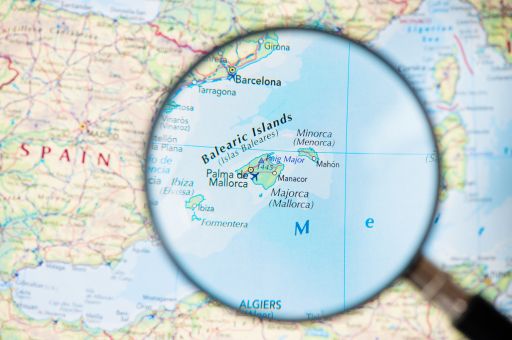This growth is higher than the national average (+3.2%) and is well above that recorded in the European Union (+1.0%).
The forecast for this year maintains the trend with an increase of 2.7%.
The Balearic Islands maintained the growth rate of 2023 and grew by 4 % in 2024. This is the result of the Analysis of the Balearic Islands for the first quarter of 2025, which was presented today by the Vice President of the Government of the Balearic Islands, Antoni Costa, and the Director General of Economy and Statistics, Catalina Barceló. This growth is higher than the national average (+3.2%) and is well above that recorded in the European Union (+1.0%). “The economy of the Balearic Islands presents a strong economic dynamism that has exceeded, and I say it with pride, all expectations,” said Costa, who recalled the caution of the Government in the estimates.
TDB keeps you informed. Follow us on: Facebook, Twitter and Instagram
“This progression has also forced us to review the growth of 2023 to reach 4.1%,” added Barceló, who stressed that positive rates are recorded in all sectors: Agriculture and Fisheries (+1.5%), Industry and Energy (+2.6%), Construction (+1.9%) and Services (+4.3%). By islands, Mallorca will recover more in 2024 with a growth of 4.4 %, followed by the Pitiusas (+3.3 %) and Menorca (+1.5 %).
As a whole, the Balearic Islands grew by over 4% in the third and fourth quarters of last year, above the rise of the Spanish total in the last period of 2024 (+3.5%) and of the European Union (+1.4%). The trend of the Balearic economy will continue in 2025 and the archipelago will maintain high growth rates, with a 2.7 % rise according to the latest forecast of the Ministry of Finance, one-tenth above the improvement of the total of Spain.
In terms of tourism, 2024 presented the highest average expenditure per tourist per day recorded so far (187 euros) – up 44.3 % from 2016 – to reach a total expenditure of 22,381 million euros (+12.2 %). Spending per person also improved over previous years, at €1,195 (+7.0 %). Overnight stays also continued to rise (4.4 %), while the average stay of 2023 was maintained (6.4 days). Tourist arrivals also grew in 2024 (+4.9 %) to 18.7 million people, mainly due to the rise in foreign visitors (+6.1 %). In addition, the beginning of the year confirms the expectations of growth in spending and tourists, surpassing the pre-pandemic years, with an annual variation in spending per person per day of 8.0 % in the first month of 2025.
On the other hand, the turnover of the services sector continues to expand, with a cumulative growth in 2024 of 7.0%, the second highest in Spain (3.0%). Also, more moderately, retail trade sales are increasing for the year.
Regarding housing, up to September 2024, there was an increase in housing starts (+12.3 %) and completions (+4.2 %). In addition, there was a sharp rise in the number of homes approved in the Islands last year, with 3,371, i.e., 13.3 % more. Likewise, the sale and purchase of homes moderated the decline in the last months of the year, while the increase in the price of housing (general index) in the Islands (+6.6%) was below that of Spain (8.4%).
The labour market, on the other hand, reached a record number of affiliations, with 555,954 affiliates (+3.5 %), while the trade balance generated a surplus of 1,018 million Euros, with an accumulated improvement in exports of +9.9 % and a decrease in imports (-14.1 %).
On this occasion, the challenge of digital transformation as a lever of GDP per capita was analyzed. First, Barceló explained the Digital Intensity Index (IID), which measures the progress and achievement of the digital objectives of member countries and regions based on 12 variables that address e-sales, ICT security measures adopted, hiring ICT specialists and staff training, the use of artificial intelligence, remote access and the holding of online meetings, etc.
In addition, analyzing the link between digital transformation and GDP per capita, “it is observed how European countries that lead the digital transformation (their business fabric achieves between 80-90 % of basic digital intensity), are also leaders in GDP per capita (which is between 40,000 € and 50,000 €)”. Therefore, Costa concluded, “digital transformation boosts productivity, optimizes processes and achieves greater efficiency and competitiveness. And, therefore, a direct and positive relationship is established with GDP per capita”.
In the case of the Balearic Islands, in 2022 three out of four SMEs (73 %) will reach a low or very low level of digital intensity, a percentage similar to the national average (72 %) and somewhat above the European average (68 %). In 2024, the numbers in the Islands remain the same (71 %), but there is a greater innovative effort in the rest of Spain (67 %), which is almost equal to the continental average (66 %).
69 % of Balearic SMEs have a basic level of digital services and 31 % a very low one. These figures are lower than the Spanish average (75 %), although still above the EU (58 %). The level is comparable to SMEs in France (69 %), Croatia (64 %), Romania (70 %) and Lithuania (67 %), although it is far from the European Commission’s target for 2030 (90 %).
